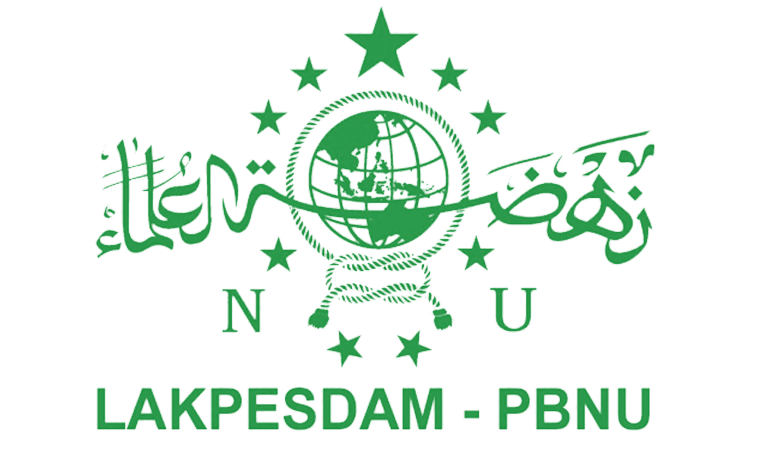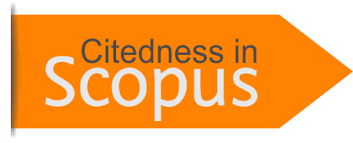VISITING TUAN TOSALAMA’S GRAVE IN BULO-BULO MANDAR: Max Scheler’s Value Hierarchy Perspective
DOI:
https://doi.org/10.31969/alq.v29i1.1248Keywords:
grave, local tradition, hierarchy valuesAbstract
Abstract
The purpose of this article is to examine the tradition of visiting Tuan Tosalama ri Bulo-bulo's grave and to learn more about the phenomenon of this practice. Observation and in-depth interviews were used in a descriptive qualitative methodology. Additionally, the data were examined using Max Scheler's value hierarchy methodology. The findings demonstrated that Tuan Tosalama ri Bulo-bulo, who lived in the 16th century, was thought to be the one who first spread Islam in the confederation area of Karua Tiparittiqna Uhai (eight drops of water from the mountain). The inhabitants of Bulo- bulo regularly visit the graves as pilgrims who have been purified. As a sign of appreciation and a salute to Tuan Tosalama ri Bulo-bulo, it has even become a yearly custom in the area following the rice harvest. Not only is visiting the tombs a ritual, but it also has philosophical benefits, including spiritual, psychological, and recreational ones. The abundance of cakes and food served in each house highlights the pleasure value of having fun. This pilgrimage tradition's main benefit is that it serves as a meeting place for migrants returning home and residents of Bulo-bulo. Following their visit to Tuan Tosalama ri Bulo-bulo's grave, pilgrims are said to experience inner peace, according to psychological values. While traveling, pilgrims develop spiritually and exhibit religious values.
Â
References
References
Al-Bantani, S. N. (2013). Nashaihul Ibad Fi Bayani AlFazhi Munabbihat ’ala Isti’dad li Yaum al-Ma’ad diterjemahkan oleh Fuad Saifuddin Nur dengan judul Kumpulan Nasehat Pilihan Syekh Nawawi Al-Bantani. Turos.
Alimuddin, M. R. (2020). Majene Kota Tua: Pelestarian dan Potensi Kepariwisataan. Penerbit Teluk Mandar Kreatif.
Arhamarrahimin. (2022). Tradisi Makkuliwa Lopi Pada Masyarakat Mandar Balanipa Dalam Perspektif Hukum Islam. Shautuna: Jurnal Ilmiah Mahasiswa Perbandingan Mazhab, 3(1).
As, A. (2018). Membaca Fenomena Ziarah Wali Di Indonesia: Memahami Tradisi Tabarruk dan Tawassul. Al-Banjari, 17(2).
Aziz, A. (2018). Ziarah Kubur, Nilai Didaktis dan Rekonstruksi Teori Pendidikan Humanistik. Epistemé: Jurnal Pengembangan Ilmu Keislaman, 13(1).
Badruddin. (2019). Ziarah Wali Kyai Hamid Pasuruan Dan Tradisi Islam Di Nusantara (A. Khoirul Anam (Ed.)). Pustaka Compass.
Beattie, H. (1983). Tombs and Footprints: Islamic Shrines and pilgrimages In Modern Iran dan Afghanistan. School of Oriental and African Studies.
Bodi, M. I. K. (2013). Tinggalan-tinggalan Islam di Majene. Al-Qalam, 19(2).
BPS Polman (Ed.). (2022). Kecamatan Tubbi Taramanu Dalam Angka 2022. BPS Kab. Polman.
Chambert-Loir, H. (2007). Ziarah dan Wali Di Dunia Islam. Serambi Ilmu Semesta bekerjasama Ecole francaisa d’Extreme-Orient.
Chotib, M. (2015). Wisata Religi Di Jember. Fenomena, 14(2).
de Jonge, H. (1998). Pilgrimages and Local Islam on Java. Studia Islamika, 5(2).
Dwiputri, I. A. (2020). Sayyang Pattuqduq as a Mandarese Identity in the Hyperreality Post-truth Era. Proceedings of the 4th International
Conference on Arts and Arts Education (ICAAE 2020).
Hadi, S. (2016). Metodologi Riset (2nd ed.). Pustaka Pelajar.
Hamid, A. R. (2022). Kebangkitan Mandar abad XVI-XVII. Pangedereng: Jurnal Hasil Penelitian Ilmu Sosial Dan Humaniora, 8(2).
Hamid, I. (2020). Motif dan Resepsi Zamali Di Pondok Pesantren Salafiyah Parappe Kecamatan Campalagian Sulawesi Barat. UIN Sunan Kalijaga, Yogyakarta.
Jannah, R. (2018). Wisata Religi dan Pemuda Di Makam KH. Muhammad Kholil Bangkalan (2011-2017) (Studi Sosial Ekonomi di Makam KH.
Muhammad Kholil Bangkalan). UIN Sunan Ampel Surabaya.
Jirzanah. (2008). Aktualisasi Pemahaman Nilai Menurut Max Scheler Bagi Masa Depan Bangsa Indonesia. Jurnal Filsafat, 18(1).
Jum’ah, A. (2017). Menjawab Dakwah Kaum Salafi (1st ed.). Khatulistiwa Press.
Kamaruddin. (2022). A Debate on the Islamic Practice of Pilgrimage to the Grave: Study of the Hadīth on Grave Pilgrimage for Women. AlQuds: Jurnal Studi Alquran Dan Hadis, 6(2).
Koentjaraningrat. (1994). Metode-Metode Penelitian Masyarakat. PT. Gramedia Pustaka.
Latif, M. (2002). Sakral dan Profan: Kasus Tosalama di Bulo-bulo Mandar. Universitas Hasanuddin, Makassar.
Latif, M. M. I. U. (2021). Fenomena Ziarah Makam Wali Masyarakat Mandar. Khazanah: Jurnal Studi Islam Dan Humaniora, 19(2).
Ma’ruf, M. A. (2021). Tradisi Ziarah Dalam Perspektif Hadis Nabi: Living Hadis di Peziarahan Kapal Bosok Kp. Darangong Kel. Curugmanis Kec. Curug Kota Serang. Jurnal Holistic Al-Hadis, 7(1).
Mahzumi, M. A.-Q. A. S. (2019). Spritual Eduaction Through Ziarah Tradition In Syaikh Syamsuddin Al-Wasil Tomb Kediri City. El-Harakah, 21(2).
Majid, A. (2022). Honoring the Saint through Poetry Recitation: Pilgrimage and the Memories of Shaikh Abdurrahman Siddiq Al-Banjari in Indragiri Hilir. Religions, 13(3).
Maryamah. (2020). Fenomena Ziarah Masyarakat di Sumatera Selatan: Studi Etnografi pada Makam Kiai Muara Ogan. Kontekstualita, 35(2).
Moleong, L. J. (1990). Metodologi Penelitian Kualitatif (T. Sujarman (Ed.)). PT Remaja Rosdakarya.
Nur’aini, A. D. (2022). Pemahaman Tokoh Muhammadiyah Kota Pasuruan Terhadap Hadis Bid’ah dan Ziarah Wali. UIN Sunan Ampel Surabaya.
Nurannisa. (2021). Tradisi Mappande Sasi’ Pada Masyarakat Tanga-tanga Kabupaten Polewali Mandar (Studi Budaya Islam). UIN Alauddin Makassar.
Nurhadi. (2018). Ta’arud Hadis Tentang Ziarah Kubur Dalam Perspektif Empat Mazhab. Religia: Jurnal Ilmu-Ilmu Keislaman, 22(2).
Purnomo, R. (1993). Konsep Nilai Menurut Max Scheler. Filsafat, 16.
Quinn, G. (2009). Where History Meets Pilgrimage The Graves of Sheikh Yusuf Al-Maqassari and Prince Dipanagara in Madura. Journal of Indonesian Islam, 3(2).
Rahman, A. (2022). Ritual Mappande Sasiq Pada Masyarakat di Desa Lapeo Kabupaten Polewali Mandar. Ulil Albab: Jurnal Ilmiah Multidisiplin, 1(12).
Rahman, M. T. (2022). The Development Potential for Local Communities of Religious Tourists Visiting Sacred Graves. International Journal of Religious Tourism and Pilgrimage, 10(2).
Rejeki, D. S. (2021). Religious Travel to Sheikh Quro’s Tomb, Karawang, West Java. International Journal of Religious Tourism and Pilgrimage, 9(1).
Ruhiyat. (2017). Tradisi Sayyang Pattu’du di Mandar. Studi Agama Dan Masyarakat, 13(1).
Saprillah, I. (2000). Sejarah Perjuangan Pembentukan Provinsi Sulawesi Barat (Mamuju: Dinas Pendidikan dan Kebudayaan Prov. Sulawesi Barat).
Sari, N. I. (2018). Peningkatan Spiritualitas melalui Wisata Religidi Makam Keramat Kwitang Jakarta. Jurnal Studi AlQur’an: Membangun Tradisi Berfikir Qur’ani, 14(1).
Tadjuddin, T. (2019). Budaya Makuliwwa: Studi Living Qur’an Masyarakat Nelayan Desa Pambusuang Kecamatan Balanipa Kabupaten Polewali Mandar Sulawesi Barat. Citra Ilmu, 15(30).
Wahana, P. (2016). Menerapkan Etika Nilai Max Scheler Dalam Perkuliahan Pendidikan Pancasila Untuk Membangun Kesadaran Moral Mahasiswa. Jurnal Filsafat, 26(2).
Yuliyatun. (2015). Ziarah Wali Sebagai Media Layanan Bimbingan Konseling Islam Untuk Membangun Keseimbangan Psikis Klien. Konseling Religi: Jurnal Bimbingan Konseling Islam, 6(2).
Zuhri, S. (2022). Wali Pitu and Muslim Pilgrimage in Bali, Indonesia. Leiden University Press.
Additional Files
Published
Issue
Section
License
Authors who publish with this journal agree to the following terms:
- Authors retain copyright and grant the journal right of first publication with the work simultaneously licensed under Creative Commons Attribution-NonCommercial-ShareAlike 4.0 International License that allows others to share the work with an acknowledgement of the work's authorship and initial publication in this journal.
- Authors are able to enter into separate, additional contractual arrangements for the non-exclusive distribution of the journal's published version of the work (e.g., post it to an institutional repository or publish it in a book), with an acknowledgment of its initial publication in this journal.
- Authors are permitted and encouraged to post their work online (e.g., in institutional repositories or on their website) prior to and during the submission process, as it can lead to productive exchanges, as well as earlier and greater citation of published work (See The Effect of Open Access).















